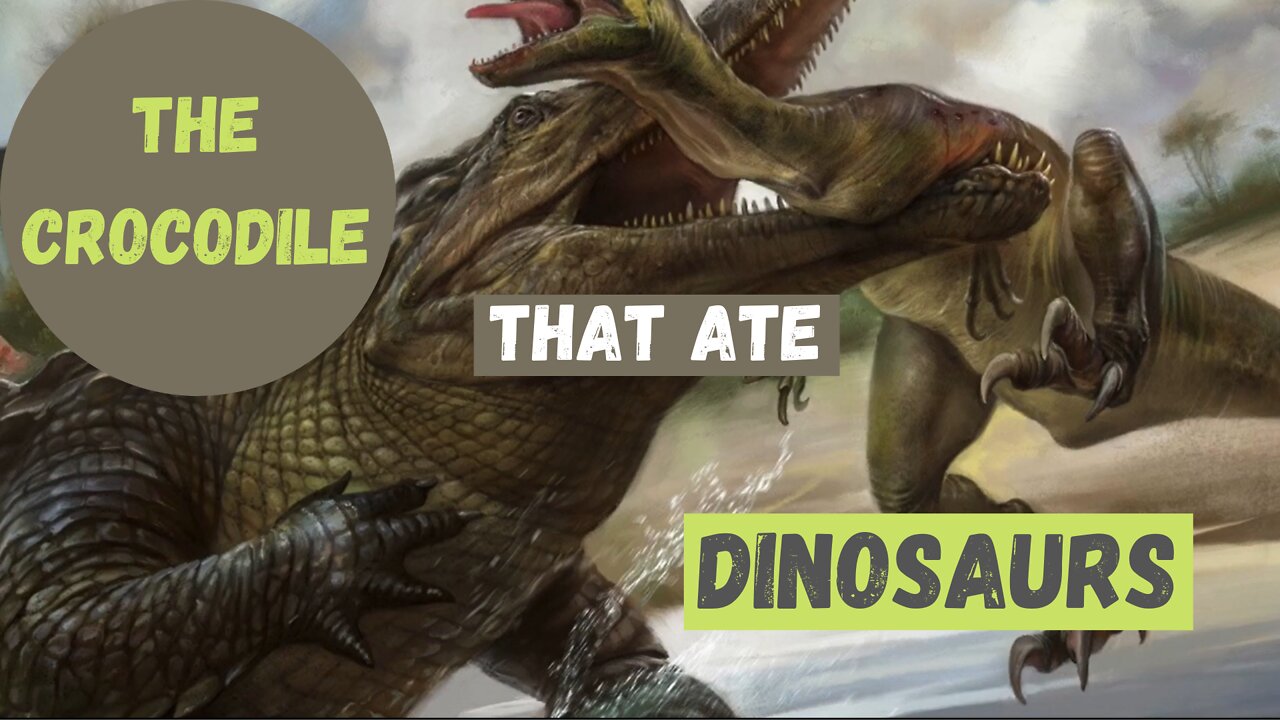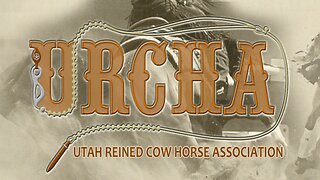Premium Only Content

The Biggest and Meanest Crocodile to ever exist .The Croc that ate Dinosaurs.
Sarcosuchus (/ˌsɑːrkoʊˈsuːkəs/; meaning "flesh crocodile") is an extinct genus of crocodyliform and distant relative of living crocodylians that lived during the Early Cretaceous, from the late Hauterivian to the early Albian, 133 to 112 million years ago of what is now Africa and South America. It was one of the largest crocodile-line reptiles, reaching an average estimate of 9 m (30 ft) and 3.5 metric tons (3.9 short tons), but estimated to grow up to 9.5 m (31 ft) in body length and weigh up to 4.3 metric tons (4.7 short tons). It is known from two species, S. imperator from the early Albian Elrhaz Formation of Niger and S. hartti from the Late Hauterivian of northeastern Brazil, other material is known from Morocco and Tunisia and possibly Libya and Mali.
The first remains were discovered during several expeditions led by the French paleontologist Albert-Félix de Lapparent, spanning from 1946 to 1959, in the Sahara. These remains were fragments of the skull, vertebrae, teeth, and scutes. In 1964, an almost complete skull was found in Niger by the French CEA, but it was not until 1997 and 2000 that most of its anatomy became known to science, when an expedition led by the American paleontologist Paul Sereno discovered six new specimens, including one with about half the skeleton intact and most of the spine.
Sarcosuchus was a giant relative of crocodiles, with fully grown individuals estimated to have reached up to 9 to 9.5 m (29.5 to 31.2 ft) in total length and 3.5 to 4.3 metric tons (3.9 to 4.7 short tons) in weight.[1] It had somewhat telescoped eyes and a long snout comprising 75% of the length of the skull. There were 35 teeth in each side of the upper jaw, while in the lower jaw there were 31 teeth in each side. The upper jaw was also noticeably longer than the lower one leaving a gap between them when the jaws were shut, creating an overbite. In young individuals the shape of the snout resembled that of the living gharial but in fully grown individuals it became considerably broader.
Bulla
Sarcosuchus has an expansion at the end of its snout known as a bulla, which has been compared with the ghara seen in gharials. However, unlike the ghara, which is only found in male gharial, the bulla is present in all Sarcosuchus skulls that have been found so far, suggesting that it was not a sexually dimorphic trait. The purpose of this structure is not known.
Osteoderms
Scutes of S. imperator
The osteoderms, also known as dermal scutes, of Sarcosuchus were similar to those goniopholodids like Sunosuchus and Goniopholis; they formed an uninterrupted surface that started in the posterior part of the neck up to the middle of the tail like is seen in Araripesuchus and other basal crocodyliforms, different from the pattern seen in living crocodiles, which present discontinuity between the osteoderms of the neck and body.
-
 LIVE
LIVE
LFA TV
3 hours agoLFA TV ALL DAY STREAM - THURSDAY 8/28/25
4,966 watching -
 LIVE
LIVE
Total Horse Channel
13 hours ago2025 URCHA Futurity | Derby & Horse Show | Thursday
104 watching -
 UPCOMING
UPCOMING
The Big Mig™
1 hour agoThe War Powers Resolution w/ David Clements
1277 -
 LIVE
LIVE
Badlands Media
6 hours agoBadlands Daily: August 28, 2025
4,129 watching -
 1:43:15
1:43:15
Dear America
2 hours agoTrans Violence Against Christianity MUST BE STOPPED!!
87.1K74 -
 LIVE
LIVE
Wendy Bell Radio
6 hours agoGuns Don't Kill People
7,258 watching -
 LIVE
LIVE
Matt Kohrs
9 hours agoMarket Open: New Highs or Bust?! || Live Trading Futures & Options
612 watching -
 46:34
46:34
Randi Hipper
1 hour agoWALL STREET'S CRYPTO BET REVEALED! HINT: IT'S NOT BITCOIN!
2.18K1 -
 LIVE
LIVE
The Mike Schwartz Show
1 hour agoTHE MIKE SCHWARTZ SHOW with DR. MICHAEL J SCHWARTZ 08-28-2025
4,158 watching -
 2:04:35
2:04:35
Game On!
20 hours ago $3.07 earnedCollege Football Is BACK! Week 1 Preview!
36.2K2